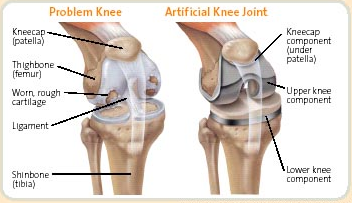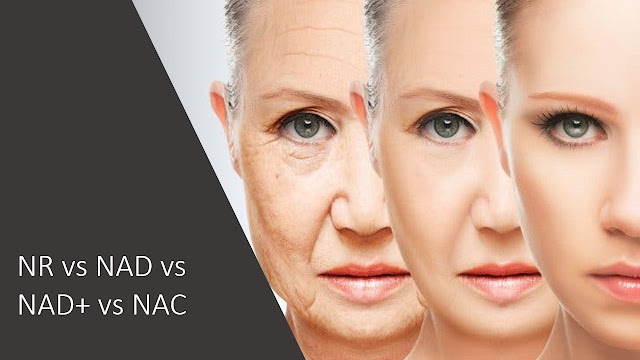Stem Cell Therapy for Knees: Cost, Fact-Check, Evidence Review and Side Effects (2023)
Globally, stem cell therapy is being touted as a miracle cure for everything from wrinkles to spinal repair. However, there is also a lot of misinformation out there. Even among medical groups, the recommendations are conflicting, lacking in depth and out-dated. There are also stem cell clinics that are offering bogus and hazardous stem cell products, preying on the sick and the elderly.
One of the most common questions we get from patients is about stem cell therapy for knees. Can it help knee arthritis and pain? Today’s post is a fact-check of where things stand today in 2023 on stem cells for knee issues.Stem cell therapy could also potentially treat osteoarthritis (OA) of the knee. In OA, the cartilage covering the ends of the bones starts to deteriorate and wear away. As the bones lose this protective covering, they start to rub against one another. This leads to pain, swelling, and stiffness — and, ultimately, loss of function and mobility.
Millions of people in the United States live with OA of the knee. Many manage their symptoms through exercise, weight loss, medical treatments, and lifestyle modification.If symptoms become severe, total knee replacement is an option. Over 600,000 people a year undergo this operation in the United States alone. Most consumers are interested in stem cell treatment for knee pain as a non-surgical option as opposed to knee replacement surgery.
As of May 2023, more than 100 studies have also been launched to investigate the benefits of stem cell therapy on knee osteoarthritis alone. You can review the status of these trials on clinicaltrials.gov.
To learn more about the basics of stem cells, check out stem cell basics and stem cell research update and review.
Review of stem cell therapy for knees
www.onedaymd.com
Regenexx, the largest provider of stem cell therapy for orthopaedic conditions in the United States have treated 30,000 patients with stem cell therapy for various joint conditions including knee pain.
Here, we have compiled and updated a few major studies and related review to stem cell therapy for knee pain:
- Dec 2019 - A related review - Allogeneic Versus Autologous Injectable Mesenchymal Stem Cells (MSC) for Knee Osteoarthritis (OA): Review and Current Status. The review and analysis concluded that MSC therapies in the treatment of knee OA are safe and have shown promising results but the available studies are limited. At this time, no definitive recommendations can be made regarding which MSC source to use. Allogeneic (source from different individuals) MSCs offer theoretical advantages over autologous (source from self) MSCs, especially in ease of use and consistency of product, but there are concerns regarding cell viability and vitality, as well as the body's response to non-autologous products. Future clinical trials should focus on head-to-head comparisons of MSC sources as well as the use of multiple injections for patients with knee OA.
- In 2016, a 9 year follow up study of 2,372 patients in 18 clinical facilities was published by Centeno et al. Treated areas of the body included the knee, hip, ankle/foot, hand/wrist, elbow, shoulder, and spine. There was no evidence to suggest that treatment with mesenchymal stem cells (MSCs) of any type in this study increased the risk of cancer.
- In 2016, a study on knee osteoarthritis has shown a 25 million of adult human bone marrow, allogeneic (source from different individuals) mesenchymal stromal cells to be the most effective dose tested for knee joint pain reduction.
Stem cell knee therapy cost: $2,500-$15,000
- A one-time treatment that utilizes blood drawn from a patient can cost as little as $2,500.
- In contrast, protocols that utilize a bone marrow or adipose (fat) tissue extraction can run as much as $15,000.
McCormack has quotes both from the lead authors, Nicolas Piuzzi and George Muschler, of the study entitled, “The Stem-Cell Market for Treatment of Knee Osteoarthritis: A Patient Perspective“, which is published in Journal of Knee Surgery with some big picture perspectives and thoughts on the meaning of their work. Check it out.“In a study presented at the Annual Meeting of the American Academy of Orthopaedic Surgeons, researchers contacted 317 clinics in the US that directly market stem cell therapies to consumers. They asked the clinics for information on the cost of the procedure and their success rate.
- Only 65 clinics responded
- Lowest price was $1,150
- Highest price was $12,000,
- Average price of $5,156.
Only 36 clinics responded with information about success rates.
- 10 claimed between 90 and 100 percent success
- 15 claimed 80 to 90 percent success
- 10 claimed 70 to 80 percent
- One said just 55 percent.
None offered any evidence based on a clinical trial that supported those claims, and there was no connection between how much they charged and how successful they claimed to be.”
Stem cell injections for knees
The cartilage covering the ends of the bones enables the bones to glide smoothly against one another with only slight friction. OA causes damage to the cartilage and leads to increased friction — resulting in pain, inflammation, and ultimately, a loss of mobility and function.In theory, stem cell therapy uses the body’s own healing mechanisms to help repair and slow the deterioration of body tissues, such as cartilage.
Stem cell therapy for knees aims to:
- slow and repair damaged cartilage
- decrease inflammation and reduce pain
- possibly delay or prevent the need for knee replacement surgery
- taking a small amount of blood, usually from the arm
- concentrating the stem cells together
- injecting the stem cells back into the knee
Side effects and risks
Stem cell treatment for knees is non-invasive, and studies suggest that side effects are minimal.After the procedure, some people may experience temporary increased pain and swelling for a day or two. However, the overwhelming majority of people who get stem cell injections have no adverse side effects.
The procedure uses stem cells that come from your own body or from third party sources such as Umbilical Cord derived Mesenchymal Stem Cells (UC-MSC). There are also various ways of harvesting and processing the stem cells, which likely affects the various success rates of the published studies.
Before receiving any treatment, it’s best to:
- learn as much as you can about the procedure and how it works
- ask your doctor for advice
Stem Cell Knee Cartilage Regeneration Therapy Procedure

Stem cell therapy for knee osteoarthritis is being touted as a miracle cure for knee osteoarthritis and is a preferred non-surgical option over the more invasive total knee replacement surgical procedure.
Knee Assessment
PRP vs Stem Cells vs Exosomes
For peripheral mild to moderate tendon injuries (partial shoulder rotator cuff tears, shoulder labral tears, tennis/golfer’s elbow, carpal tunnel syndrome, mild hip osteoarthritis, hip labral tears, gluteal or hamstring tears, trochanteric bursitis, mild knee osteoarthritis, mild meniscal tears, ankle ligament sprain, plantar fasciitis and others), platelet-rich plasma is usually a good alternative of treatment. The ease of collection and lower cost are advantages. The need for repeated treatments is somewhat of a disadvantage.
If the injuries or osteoarthritis are severe, then stem cells are a better alternative. One advantage of stem cell therapy is the treatments required are less, and potential drawbacks are the cost.
The age of the patient determines whether patient’s own stem cells are used or not. After age 45, the number of stem cells in bone marrow decreases rapidly every year. The general health of the patient also contributes to the number and quality of stem cells in their tissues.
For a patient who is 50 years old or older, while PRP could be useful, a decision on whether internal sources of stem cells or external sources of stem cells (commercially available regenerative cells derived from healthy donors) to be used will need to be considered.
There is a plethora of these commercially available products, ranging from growth factors derived from placental tissues (umbilical cord blood, amniotic fluid, Wharton’s jelly, etc) to stem cells derived from donors.
Exosomes are the result of a purification process of stem cells. The result is a concentration of proteins, messenger RNA (mRNA) and growth factors, without any of the original cell’s DNA. The lack of DNA makes rejection of these cells impossible so it lowers the risk of their use.
Therefore, for an older patient with moderate osteoarthritis, a combination of patient’s own PRP and commercially available exosomes might be a viable and balanced option.
Discuss with your doctor and choose the least invasive method to begin with.
How long do stem cell injections last?
In summary, the type of long-term data that can answer the question "how long does stem cell therapy last for knees" exists for the Regenexx bone marrow based procedure. No one else has published or posted on-line data that would allow us to answer that question. The answer is 5-7 years in about two-thirds of the patients. Read more: "How Long do Stem Cell Injections last for Knee Pain?".Key Takeaway
If you are considering stem cell therapy for a knee injury or condition, it is important to discuss the potential benefits and risks with a trusted qualified healthcare provider. They can help you make an informed decision about whether stem cell therapy is right for you.




.png)



Comments